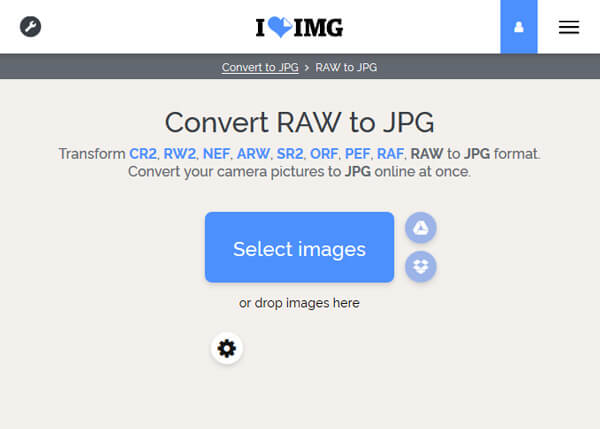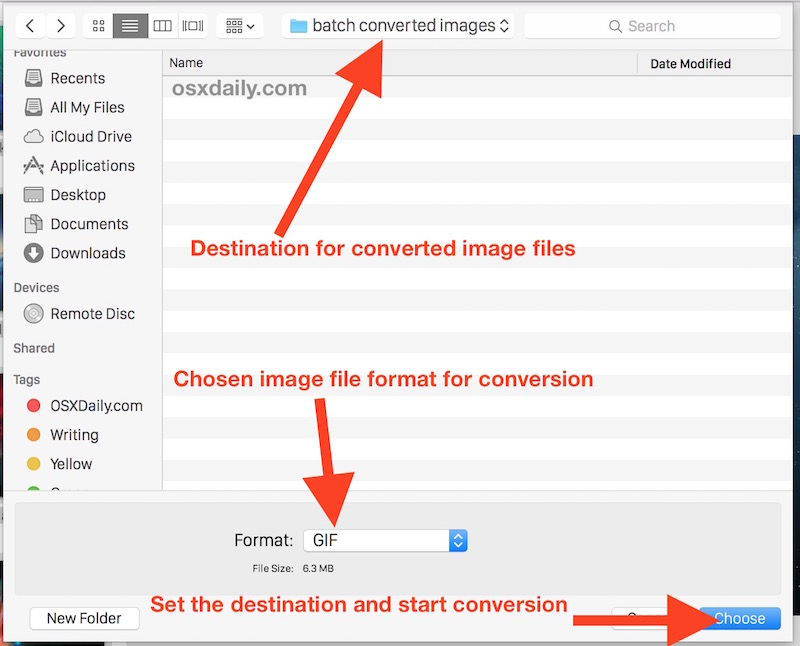How to convert ARW to JPG
Open Raw.pics.io page in your browser
Click 'Open files from computer' button in the center of the screen
Select arw files you want to convert
Select files from the bottom film strip and choose 'Save selected' on the left or 'Save All' if you want to save all the files
Your files should appear in the browser Downloads folder
To view and convert ARW photos to JPG you need nothing but a modern browser. Our online tool supports Chrome, Firefox and Safari. To start working you just need click 'Go to App'
We removed any unnecessary hitches, so it doesn’t require registration and really allows to convert files in one mouse click. Oh, and it’s free for a certain number of photos you want to process.
Batch convert ARW to JPG

To view and convert ARW files to JPG you may drop a number of them right into our app. The app allows you to convert bunch of the photos in one go. Just open the app, drop photos there and press 'Convert' button. You will get your photos in JPG or PNG format into your Download folder.
ARW to JPG converter for your favorite photos. This online tool will help you to convert files from ARW to JPG or to any other image format. It's safe, easy to use, and completely free. Plus, you can convert as many files as you want. Choose the ARW file that you want to convert. Select JPG as the the format you want to convert your ARW file to. Click 'Convert' to convert your ARW file. Zamzar Pro Tip: If you are struggling to open ARW files then you could consider using the Open Source IrfanView. Cameras that create JPEG or TIFF files process (and in the case of JPEG files, compress) the sensor data. When working with raw files, the file is not compressed or processed in the camera. Instead, software gives the user complete control over the conversion settings. For example, white balance is not applied to the raw file but is stored with. The raw.pics.io website is a perfect tool for viewing and converting an ARW file to JPG. It’s free and available online. Other ARW to JPG converter tools like this one can be found by searching Google. Another alternative is the Adobe DNG Converter – another free tool that converts ARW to DNG. Once finished editing image, go to Lightroom library. Once you are happy with the edits of your.
What is ARW?
ARW is a raster image format. You may get an .arw file while shooting with a Sony camera. The format is based on TIFF specification. ARW files contain raw unprocessed data from the camera sensor.

How to open and view ARW file?
You cannot open or view .arw file without special software - raw converter. In simple words, a converter is a program or a service that can read ARW file format and show its content. In most of cases, a converter is a complex and expensive software that should be installed on your computer. If you want a simple way to work with your arw files, you can use raw.pics.io. It’s an easy to use service that allows you to open, view, and convert your arw files without restrictions.
ARW pros and cons
Like any other raw format, ARW format is great. ARW file contains all the information captured by the camera in the moment of shooting. Using ARW files allows you to adjust lots of parameters, such as exposure or white balance after shooting, which is not possible if you're using JPG files. With such great advantages, there are a few downsides. In particular you cannot open an .arw file without special software - raw converter. Also, ARW files are pretty heavy, like 20 MB and more. They are 5-8 times bigger than a JPG with the same resolution.
The Adobe DNG Converter enables you to easily convert camera-specific raw files from supported cameras to a more universal DNG raw file. Another benefit of using the DNG Converter is backward compatibility.
Note:
Adobe provides backwards compatibility for the latest cameras for use in older versions of Photoshop, Lightroom, Bridge, After Effects, and Photoshop Elements through the DNG Converter.
For conceptual information about raw files and the DNG format, and to understand why you should convert your files to DNG, see the Appendix.
Windows: Adobe DNG Converter
macOS: Adobe DNG Converter
- Open the downloaded file and double-click the DNG Converter executable file.
- Follow the onscreen instructions.
The DNG Converter is now available in your Programs (Windows) or Applications (macOS) directory. The installation utility is designed to also install a set of color profiles required for the DNG Converter to function properly. These profiles are copied to a common resource location.
- Launch the DNG Converter by double-clicking its icon. Alternatively, drag and drop individual images or a folder of images directly onto the Adobe DNG Converter icon. This action automatically launches the converter.
- Select the folder of images you'd like to convert to DNG.
- Select the location where you want to save the converted DNG files.
- Select a naming pattern for the new DNG files:
Document Name: The existing name of the file is used with the DNG extension added.
Add serial numbers or letters to the name: Advanced patterns; an example of the resulting name appears after Name Example. - Specify the following additional settings for the DNG file names:
Begin numbering: Enter the starting serial number if you'd like it to be different from 1.
File Extension: The file extension is automatically set to DNG. You can choose the extension to be either uppercase or lowercase. - If necessary, change the compatibility preferences.
- Click Convert. A dialog box showing the status of the conversion appears.
To change compatibility preferences, follow these steps:
- In the Preferences section of the DNG Converter dialog box, click Change Preferences.
- Choose one of the following options:
Camera Raw 2.4 and later: The DNG file will be readable by Camera Raw 2.4 (Photoshop CS) and later, and Lightroom 1.0 and later
Camera Raw 4.1 and later: The DNG file will be readable by Camera Raw 4.1 (Photoshop CS3) and later, and Lightroom 1.1 and later. The DNG file will often be readable by earlier versions, depending on the camera model.
Camera Raw 4.6 and later: The DNG file will be readable by Camera Raw 4.6 (Photoshop CS3) and later, and Lightroom 2.1 and later. The DNG file will often be readable by earlier versions, depending on the camera model.
Camera Raw 5.4 and later: The DNG file will be readable by Camera Raw 5.4 (Photoshop CS4) and later, and Lightroom 2.4 and later. The DNG file will often be readable by earlier versions, depending on the camera model.
Camera Raw 6.6 and later: The DNG file will be readable by Camera Raw 6.6 (Photoshop CS5) and later, and Lightroom 3.6 and later. The DNG file will often be readable by earlier versions, depending on the camera model.
Camera Raw 7.1 and later: The DNG file will be readable by Camera Raw 7.1 (Photoshop CS6) and later, and Lightroom 4.1 and later. The DNG file will often be readable by earlier versions, depending on the camera model.
Custom:- Backward Version: DNG 1.1, DNG 1.3, or DNG 1.4 (default 1.4)
- Linear (demosaiced): The image data is stored in an interpolated ('demosaiced') format. This option is useful if a camera's particular mosaic pattern is not supported by a DNG reader. The default mosaic format maximizes the extent of data preserved. Mosaic image data can be converted to linear data, but the reverse is not possible.
- Uncompressed: No compression is applied to the raw image data.
Video | The advantages of the DNG file format
Arw Files To Jpg Mac
A raw file contains the 'raw' data captured by the digital camera sensor before it has been converted to JPEG or TIFF formats. Cameras that create JPEG or TIFF files process (and in the case of JPEG files, compress) the sensor data. When working with raw files, the file is not compressed or processed in the camera. Instead, software gives the user complete control over the conversion settings. For example, white balance is not applied to the raw file but is stored with the file so the software can default to the originally-intended setting. Other information contained in a DNG file includes standard EXIF metadata (just like in JPEG files), date, time, camera used, and camera settings.
Raw files offer the following benefits:
- Smaller files than uncompressed TIFF
- Does not have the artifacts of compressed JPEGs
- Many key camera parameters, such as white balance, can be modified even after the image is captured
- You have complete control over conversion settings rather than letting the camera decide
- Access to 16-bit data for greater detail and fidelity
- Flexibility of converting a single file using multiple conversion settings
Digital Negative (DNG) is an openly published raw file specification that stores the 'raw' pixel data captured by the digital camera sensor before it has been converted to JPEG or TIFF formats, along with standard EXIF metadata, date, time, camera used, and camera settings. This format is freely available for other software and hardware vendors to support.
Arw To Jpg For Mac File
Unlike most manufacturer-specific raw formats, the Digital Negative is an openly published specification that not only is supported by Adobe, but is also freely available for other software and hardware vendors to support. Consequently, it can be a safer file format to use for long-term archival purposes. Archiving your file as a digital negative eliminates worries that the raw file will no longer be readable once the camera format that created it becomes obsolete.
Arw To Jpg Macbook
The Digital Negative specification allows for not only all of the pixel information stored in current raw formats, but also for all of the additional, proprietary metadata that many manufacturers include. The Adobe DNG Converter may, in some cases, ignore some of this proprietary metadata, and only include the basic information necessary for creating a high-quality image file. The original raw file, however, can also be embedded in the new DNG format to ensure that proprietary metadata from the manufacturer is not lost.

